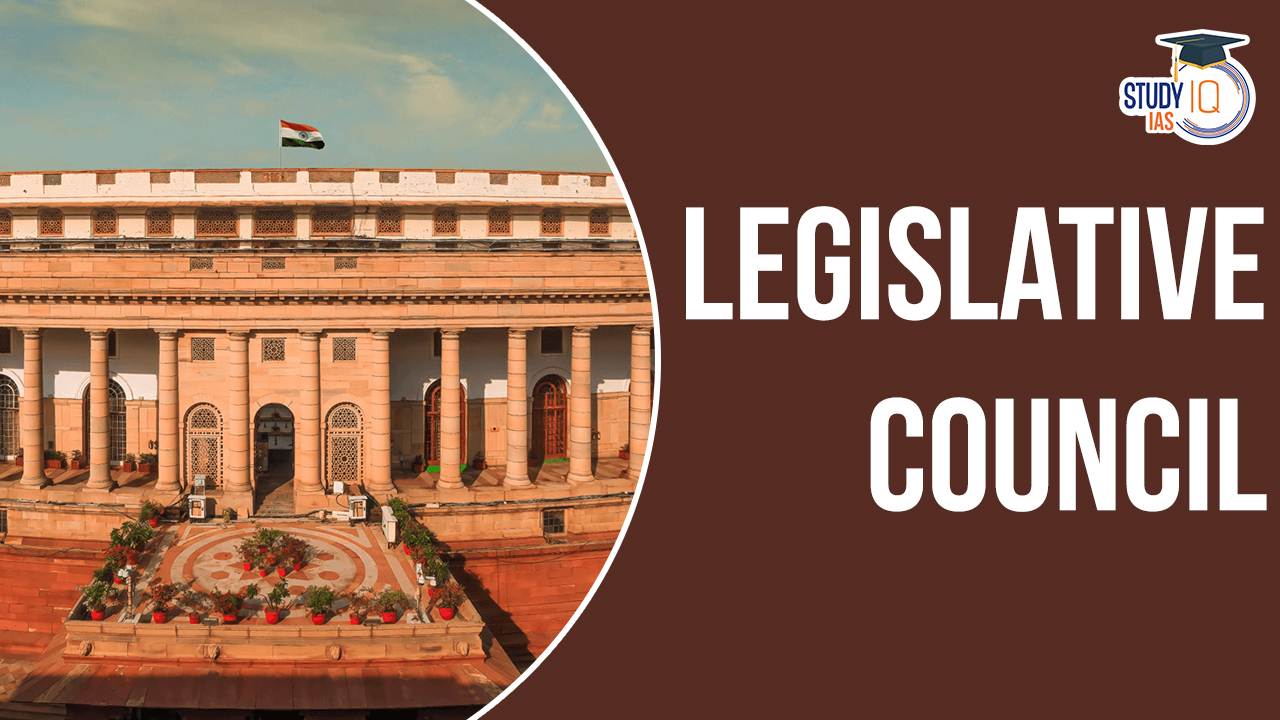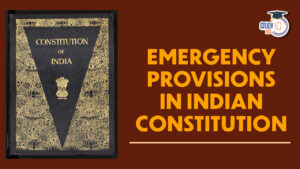Table of Contents
Context: Bypolls are scheduled in Karnataka, Uttar Pradesh, Bihar, and Andhra Pradesh to fill five vacant seats. Three of these vacancies arose due to the resignation of members.
Legislative Council
Within the Indian government, the Legislative Council is a deliberative body with limited legislative authority. A permanent body cannot be disbanded, but every two years, one-third of its members leave. It is the state legislature’s upper house. The Legislative Council is also known as the Vidhan Parishad in India.
The Legislative Council is an important part of Indian Polity which is an important subject in the UPSC Syllabus. Students can also go for the UPSC Mock Test to get more accuracy in their preparations.
Legislative Council in India
India’s Legislative Council is a permanent group of people that participates in the enactment of laws. Members of the state legislatures make up this upper house of India’s bicameral legislature. It consists of members who are appointed, members who are chosen by state legislatures, and members who are elected by municipal bodies.
The Legislative Council is the name of India’s parliament’s upper house. It is a permanent body with a maximum of 250 members, of which one-third are chosen by the State Legislative Assembly members and the remaining members follow the guidelines that the Parliament periodically sets forth. During their six-year terms, a third of the members of the Legislative Council retire every two years.
| Aspect | Details |
|---|---|
| Type of Legislature | Bicameral (Two Houses) |
| Name | Legislative Council (Vidhan Parishad) |
| Constitutional Basis | Article 169 of the Constitution of India |
| Nature | Permanent, not subject to dissolution |
| Tenure of MLCs | Six years |
| Retirement of Members | One-third of members retire every two years |
| Bicameral States | Andhra Pradesh, Telangana, Uttar Pradesh, Bihar, Maharashtra, Karnataka |
| Formation | The first Legislative Council for India was formed in 1834 |
The Legislative Council’s members elect the Chairman and Deputy Chairman. Having the exception of money bills, the Legislative Council is a deliberative body having the authority to discuss, approve, and propose amendments to laws approved by the Legislative Assembly.
Legislative Council Formation
- India operates a bicameral legislative system.
- Similar to the Parliament, states can have a Legislative Council in addition to the Legislative Assembly, as per Article 169 of the Constitution.
- Six states currently have a Legislative Council: Andhra Pradesh, Telangana, Uttar Pradesh, Bihar, Maharashtra, and Karnataka.
- In 2019, the Jammu & Kashmir Legislative Council was abolished through the J&K Reorganisation Bill, 2019, which converted the state into the Union Territories of J&K and Ladakh.
The Indian parliament is composed of two houses. States may establish a Legislative Council in addition to the Legislative Assembly, just as Parliament has two Houses, per Article 169 of the Constitution.
In 2020, the Andhra Pradesh Legislative Assembly accepted a resolution to dissolve the Legislative Council. To legally dissolve the council, this resolution still needs to be approved by the Indian Parliament. The Jammu and Kashmir Legislative Council was disbanded in 2019 as a result of the J&K Reorganization Bill, which reduced the State of J&K to the Union Territories of J&K and Ladakh.
Legislative Council States in India
Currently, only six states in India have a Legislative Council:
- Andhra Pradesh
- Telangana
- Karnataka
- Maharashtra
- Bihar
- Uttar Pradesh
Members Legislative Council
Legislative Council Members play a vital role in India’s bicameral legislative system by offering a platform for broader representation, critical review of legislation, and enriched discussion on vital issues. According to Article 171, a legislative council’s membership cannot exceed one-third of the entire membership of the Legislative Assembly. Additionally, it must have at least 40 members.
Constitutional Provisions of Legislative Council
- Article 168: Establishes the existence of Legislative Councils in states with bicameral legislatures.
- Article 170: Determines the maximum and minimum size of the LegCo in relation to the Legislative Assembly.
- Article 171: Outlines the different methods of choosing MLCs: election by MLAs, graduates, local bodies, and appointment by the Governor.
- Article 172: Defines the term of office for MLCs as six years, with one-third retiring every two years.
- Article 173: Lists the qualifications for becoming an MLC (age, citizenship, etc.) and specifies disqualifications based on certain offences or holding specific offices.
Article 169 (Creation and Abolition)
- Parliament can abolish or create a Legislative Council by a simple majority if the legislative assembly of the concerned state passes a resolution by a special majority.
- However, a resolution passed by the legislative assembly of the state for the creation or abolition of its council is not binding on the Parliament.
- Special majority means:
- A majority of the total membership of the assembly.
- A majority of not less than 2/3rd of the members present and voting in the assembly.
Legislative Council Composition
- According to Article 171, a state’s Legislative Council must have no more than one-third of the total strength of the State Assembly, and no fewer than 40 members.
- The Legislative Council is a continuing chamber, meaning it is a permanent body not subject to dissolution.
- The tenure of a Member of the Legislative Council (MLC) is six years, with one-third of the members retiring every two years.
The legislative council is a continuing chamber, similar to the Rajya Sabha, meaning it is a permanent institution that cannot be dissolved.
Election of Legislative Council
- 1/3rd of the MLCs are elected by the state’s MLAs.
- Another 1/3rd are elected by a special electorate consisting of members of local governments such as municipalities and district boards.
- 1/12th are elected by an electorate of teachers, and another 1/12th by registered graduates.
- The remaining members(1/6th Members) are appointed by the Governor for distinguished services in various fields, including literature, science, art, cooperative movement, and social service.

Legislative Council and Rajya Sabha
- Legislative Councils have limited legislative powers compared to Rajya Sabha, which has significant influence over non-financial legislation.
- Assemblies can override suggestions or amendments made by the Council.
- MLCs cannot vote in elections for the President and Vice President.
- The Vice President serves as the Rajya Sabha Chairperson, while the Council Chairperson is chosen from within the Council itself.
Power and Role of Legislative Council
Legislative Councils lack the constitutional authority to enact non-financial legislation, in contrast to the Rajya Sabha, which has considerable capacity to do so. Additionally, legislative assemblies have the authority to reject recommendations or changes made to legislation by the Council. Members of Legislative Councils are not permitted to vote in presidential and vice-presidential elections, but Rajya Sabha MPs are. MLCs are likewise ineligible to cast ballots in the elections for Rajya Sabha members.
Legislative Council Role
- It allows individuals not suited for electoral politics to contribute to the legislative process (e.g., artists, scientists).
- It can monitor and review decisions made hastily by the Legislative Assembly.


 Indian Secularism: Constitutional Provis...
Indian Secularism: Constitutional Provis...
 India Mediation Campaign, Objectives, Pr...
India Mediation Campaign, Objectives, Pr...
 Emergency Provisions in Indian Constitut...
Emergency Provisions in Indian Constitut...





















